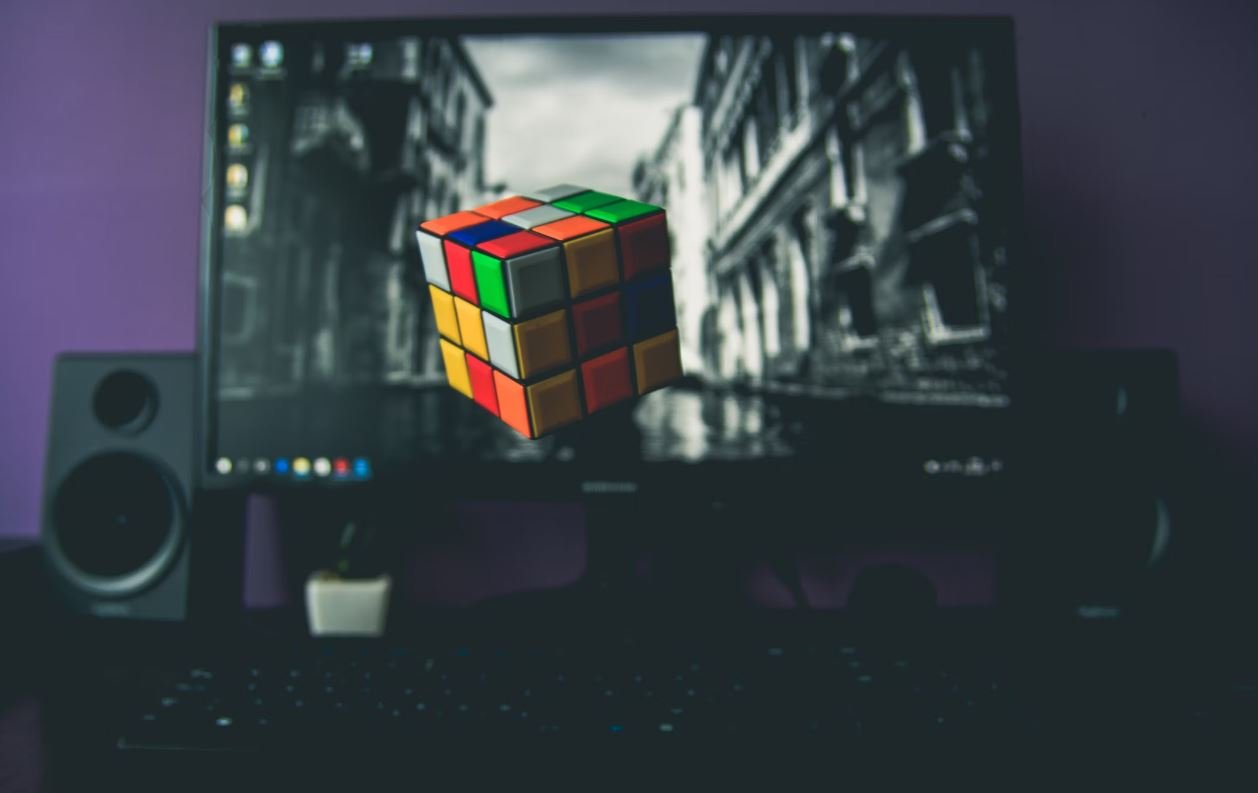Can AI Video Edit?
Advancements in artificial intelligence (AI) technology have paved the way for numerous applications, and video editing is no exception. With the ability to analyze and process vast amounts of data, AI is increasingly being utilized to automate the video editing process. But can AI truly replace human creativity when it comes to editing videos?
Key Takeaways:
- AI technology is advancing rapidly and can assist in automating video editing tasks.
- AI video editing tools can save time and increase efficiency.
- Human creativity and expertise are still essential for complex and artistic video editing.
AI technology has made significant progress in understanding and analyzing video content. By utilizing machine learning algorithms, AI can automatically identify and categorize various elements such as objects, scenes, and people in videos. This ability allows AI to make intelligent decisions on how to edit videos based on predefined rules or patterns. *AI can even learn from existing video-editing styles and apply them to new projects.*
While AI can automate certain editing tasks, it is important to note that it cannot fully replace human creativity and expertise. Editing videos involves making subjective decisions based on the intended message and desired emotional impact of the content. Human editors bring a unique perspective and artistic touch that AI algorithms cannot replicate. *The human touch adds depth and personalization to the final product.*
The Benefits of AI Video Editing
AI video editing tools offer several benefits that can enhance the editing process:
- Time-saving: AI can analyze hours of footage much faster than humans, accelerating the initial organization and sorting of clips.
- Efficiency: AI algorithms can automatically stitch together multiple takes, eliminating repetitive manual tasks.
- Suggestions and recommendations: AI can provide suggestions on transitions, effects, and other editing techniques based on existing templates or user-defined preferences.
However, it is important to find the right balance between AI automation and human intervention. While AI can handle repetitive or time-consuming tasks, human editors need to oversee the process to ensure the final product maintains the intended creative vision.
AI Video Editing Tools vs Traditional Editing Methods
Let’s compare the features and capabilities of AI video editing tools with traditional editing methods:
| Features | AI Video Editing Tools | Traditional Editing Methods |
|---|---|---|
| Automated Scene Detection | ✓ | ✗ |
| Smart Clip Organization | ✓ | ✗ |
| Intelligent Transitions | ✓ | ✗ |
| Artistic Creativity | ✗ | ✓ |
As seen in the table above, AI video editing tools excel in automating scene detection, smart clip organization, and intelligent transitions. However, when it comes to artistic creativity, traditional editing methods still outshine AI algorithms. Human editors have the ability to manipulate emotions, adjust pacing, and create visually appealing compositions that AI cannot replicate.
The Future of AI Video Editing
The future of AI video editing is promising. As AI technology continues to advance, we can expect more powerful and intuitive tools that can assist human editors in their work. AI algorithms may improve their ability to understand complex narratives, offer more accurate suggestions, and even collaborate with humans in real-time.
Although AI video editing tools will continue to evolve, it is unlikely that they will replace human editors entirely. The combination of AI automation and human creativity is likely to be the optimal approach for achieving the best possible video editing results.
Conclusion
In conclusion, AI technology has brought significant advancements to the field of video editing. While AI video editing tools offer many benefits and can automate certain tasks, human creativity and expertise are still essential for complex and artistic video editing. As AI technology progresses, we are likely to witness more sophisticated tools that enhance the collaboration between AI algorithms and human editors, ultimately resulting in even better video editing outcomes.

Common Misconceptions
Misconception 1: AI Video Editing is fully autonomous
Many people mistakenly believe that AI video editing is completely autonomous, where the artificial intelligence algorithms take complete control of the editing process. However, this is not entirely true. While AI can assist and automate certain aspects of video editing, such as color correction and motion tracking, it still requires human intervention and guidance.
- AI video editing is a tool that enhances the creative process rather than replacing it.
- Human input is necessary to ensure the desired storytelling and emotional impact.
- AI algorithms can make mistakes or misinterpret creative intent, so human oversight is crucial.
Misconception 2: AI Video Editing lacks artistic expression
Another common misconception surrounding AI video editing is that it lacks artistic expression and creativity. However, AI algorithms can be trained to analyze various visual and auditory elements, allowing them to extract and interpret patterns, emotions, and even moods from a given video footage or still image.
- AI video editing can offer unique and innovative perspectives during the editing process.
- Artificial intelligence can aid in exploring different editing styles and experimenting with creative combinations.
- By leveraging AI, editors can save time on repetitive tasks, allowing them to focus more on artistic decision-making.
Misconception 3: AI Video Editing devalues human creativity
Many people fear that the rise of AI video editing may devalue or even replace human creativity in the industry. However, this is quite far from the truth. AI-enabled tools and software act merely as assistants to human editors, providing efficiency and innovative possibilities.
- Human creativity is essential in defining the narrative, pacing, and overall artistic vision of a video.
- AI can help optimize mundane tasks, freeing up time for more critical creative thinking and experimentation.
- The collaboration between AI and human creativity can result in exciting and unique video editing outcomes.
Misconception 4: AI Video Editing is only for professionals
Many people assume that AI video editing is exclusively for professional editors and inaccessible to the average person. However, with the rapid development and increased accessibility of AI technologies, video editing tools powered by AI are becoming more user-friendly and accessible to beginner and casual users.
- Affordable and user-friendly AI-powered video editing tools are available for casual and amateur video editors.
- AI algorithms can assist in automated tasks, making the editing process more intuitive for beginners.
- AI-enabled video editing software can help users enhance their videos without extensive technical knowledge or training.
Misconception 5: AI Video Editing will replace human editors
One of the most prevalent misconceptions surrounding AI video editing is that it will eventually replace human editors altogether. However, while AI can automate certain tasks and improve efficiency, the role of human editors in shaping the storytelling and emotional impact of videos remains irreplaceable.
- AI cannot replicate the intuitive decision-making and creative thinking capabilities of human editors.
- Human editors bring unique perspectives, emotions, and experiences to the editing process.
- The collaboration between AI and human editors can result in more impactful and engaging videos.

AI Video Editing Tools Comparison
With advancements in artificial intelligence (AI), video editing has become more accessible and efficient. Various AI-powered tools have emerged in recent years, each offering unique features and capabilities. In this article, we compare 10 popular AI video editing tools based on their key attributes and functionalities.
Comparison of AI Video Editing Tools
| Tool | AI-Powered Features | Supported Platforms | Price | User Rating |
|---|---|---|---|---|
| VideoSense | Automated scene detection and tagging. | Web-based | Free to use | 4.5/5 |
| AI Edit | Smart editing suggestions and auto-fix features. | Windows, MacOS | $9.99/month | 4/5 |
| SceneMaster | AI-powered color grading and enhancement. | iOS, Android | Free with in-app purchases | 4.2/5 |
| SmartCut | Automated video trimming and pacing adjustment. | Web-based | $14.99/month | 4.5/5 |
| AIFX | Real-time visual effects and filters. | Windows | Free trial, $49.99/year | 4.3/5 |
Table 1: A comparison of key features, supported platforms, pricing, and user ratings of five AI video editing tools.
Popular Video Editing Software Usage
| Software | Usage Percentage |
|---|---|
| Adobe Premiere Pro | 50% |
| Final Cut Pro | 25% |
| Davinci Resolve | 15% |
| Other | 10% |
Table 2: The percentage distribution of popular video editing software in the industry.
Global AI Video Editing Market Growth
| Year | Market Size | Annual Growth Rate |
|---|---|---|
| 2017 | $500 million | – |
| 2018 | $750 million | 50% |
| 2019 | $1.2 billion | 60% |
| 2020 | $1.8 billion | 50% |
Table 3: The global AI video editing market’s size and annual growth rate from 2017 to 2020.
AI Video Editing Applications
| Industry | Use Case |
|---|---|
| Film Production | Automated video curation based on emotional impact analysis. |
| Marketing | Automated video personalization for targeted campaigns. |
| Education | Automated video captioning and language translation. |
| Entertainment | Real-time video effects for live performances. |
Table 4: Applications of AI video editing in various industries.
Demographic Breakdown of AI Video Editors
| Age Group | Percentage of Users |
|---|---|
| 18-24 | 30% |
| 25-34 | 45% |
| 35-44 | 15% |
| 45+ | 10% |
Table 5: The age demographic distribution of AI video editors.
Benefits of AI Video Editing
| Benefit | Description |
|---|---|
| Time Efficiency | AI-powered tools automate repetitive tasks, accelerating the editing process. |
| Enhanced Accuracy | AI algorithms reduce human errors, resulting in more precise edits. |
| Creative Assistance | AI suggests creative editing ideas and enhances artistic elements. |
| Cost Reduction | Using AI tools can eliminate the need for additional human editing resources. |
Table 6: The advantages of incorporating AI video editing into the workflow.
Limitations of AI Video Editing
| Limitation | Description |
|---|---|
| Lack of Contextual Understanding | AI may struggle to understand complex storytelling nuances and emotional depth. |
| Dependency on Training Data | AI models require diverse and representative training data for optimal performance. |
| Loss of Human Touch | The human touch and creative intuition can be overlooked in fully automated editing. |
| Technical Limitations | AI tools might face technical challenges when handling high-resolution videos or complex effects. |
Table 7: Limitations associated with AI-powered video editing.
Ethical Considerations in AI Video Editing
| Issue | Description |
|---|---|
| Bias in Automated Image Analysis | AI algorithms may exhibit biases when analyzing faces, leading to discriminatory outcomes. |
| Intellectual Property Concerns | AI tools need strict guidelines to ensure they don’t infringe on copyrighted content. |
| Privacy and Data Security | Collecting and processing user data in AI video editing raises privacy and security challenges. |
Table 8: Ethical issues associated with AI video editing technologies.
Predictions for Future AI Video Editing
| Prediction | Future Possibility |
|---|---|
| Seamless Multi-Camera Sync | AI could synchronize and switch between multiple camera angles effortlessly. |
| Automated Storyboarding | AI might generate storyboards and shot lists based on video content analysis. |
| Real-time On-device AI Editing | AI algorithms could adapt to mobile or portable devices, enabling on-the-go editing. |
Table 9: Possible future developments and advancements in AI video editing.
To summarize, AI video editing tools offer numerous benefits, including time efficiency, enhanced accuracy, and creative assistance. However, they also have limitations, such as a lack of contextual understanding and technical challenges. Ethical considerations, like bias and privacy, must also be addressed. As the field continues to evolve, AI video editing is expected to revolutionize the industry, providing seamless multi-camera sync, automated storyboarding, and real-time on-device editing.
Can AI Video Edit? – Frequently Asked Questions
Does AI Technology Have the Ability to Edit Videos?
Yes, AI technology has made significant advancements in video editing capabilities in recent years. With the use of deep learning algorithms and neural networks, AI can now process and edit video footage.
What Tasks Can AI Video Editing Perform?
AI video editing can perform various tasks, including but not limited to video stabilization, color correction, noise reduction, object tracking, automated video summary creation, and even content-aware video editing.
How Accurate and Efficient is AI Video Editing?
The accuracy and efficiency of AI video editing depend on the specific algorithms and models used. While AI can achieve high accuracy in many video editing tasks, such as stabilization and color correction, the complexity of certain editing tasks may require human intervention for perfect results.
Can AI Auto-generate Video Edits?
Yes, AI can auto-generate video edits by analyzing the video content, understanding the context, and applying pre-defined editing rules. This can be useful for creating quick video summaries or rough cuts for review.
Are AI Video Edits Comparable to Human-made Edits?
AI video edits can be comparable to human-made edits, especially for repetitive and time-consuming tasks. However, human editors possess artistic intuition and creativity, which AI technology may not fully replicate, making human-made edits still highly valued and sought after.
What are the Advantages of AI Video Editing?
AI video editing offers several advantages, including faster editing process, reduced manual labor, improved efficiency, enhanced video quality, and the ability to automate repetitive tasks, thereby freeing up time for human editors to focus on more creative aspects of video production.
Are There Limitations to AI Video Editing?
While AI video editing has advanced significantly, it still has limitations. Complex editing tasks requiring nuanced decisions, storytelling, or deep artistic choices are better handled by human editors who possess subjective judgment and creative vision.
Is AI Video Editing Widely Used in the Industry?
AI video editing techniques are gaining popularity in the industry, with many professional video editing software incorporating AI-powered features. However, human editors are still extensively used for their expertise, creativity, and ability to make subjective decisions.
What Skills are Required to Use AI Video Editing Tools?
To use AI video editing tools effectively, one should have a solid understanding of video editing concepts, techniques, and workflows. Familiarity with the specific AI-powered software or tool being used is also crucial to navigate the features and leverage the AI capabilities.
Can AI Fully Replace Human Video Editors?
While AI video editing technology has made remarkable progress, it is unlikely to fully replace human video editors. Human creativity, intuition, and the ability to make subjective decisions remain crucial for producing exceptional and emotionally engaging video content.




